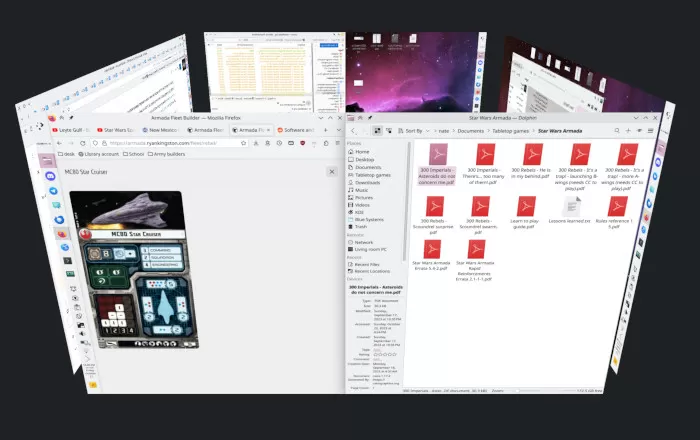- cross-posted to:
- [email protected]
- cross-posted to:
- [email protected]
Well known KDE developer Nate Graham is out with a blog post today outlining his latest Wayland thoughts, how X11 is a bad platform, and the recent topic of “Wayland breaking everything” isn’t really accurate.
“In this context, “breaking everything” is another perhaps less accurate way of saying “not everything is fully ported yet”. This porting is necessary because Wayland is designed to target a future that doesn’t include 100% drop-in compatibility with everything we did in the past, because it turns out that a lot of those things don’t make sense anymore. For the ones that do, a compatibility layer (XWayland) is already provided, and anything needing deeper system integration generally has a path forward (Portals and Wayland protocols and PipeWire) or is being actively worked on. It’s all happening!”



It was a birthday gift from my wife, and lets not alienate people who don’t know computer hardware very well and pick up something from Best Buy. I agree that Nvidia sucks, and many of the issues are indeed their fault, but we also can’t neglect the fact that they own the vast majority of the market.
I’ve been a Linux user since the 90s, and nvidia has been a problem as long as I can remember. The wayland issues are just a new chapter in a long saga. ATI used to be the same, but they came around after having been bought by AMD.
If you’re already planning to use Linux on something a quick search will directly tell you that nvidia is a problem. If you got the hardware before nvidia that sucks - but again, it’s nvidias fault.
I think we absolutely should neglect nvidias market share, and just fully drop support for nvidia cards - either they’ll get pressured by angry users to no longer behave like dicks, or they keep doing it, and people will only make the mistake of buying nvidia once (or not use Linux) - either way, we’ll have gotten rid of a massive headache.
Running AMD/AMD right now for cpu/gfx, and I’m happy with my gaming laptop (and it’s price point).
Linux support and general support of open source was amajor factor in my decision. Intel is also really good on the CPU front, but I want to support AMD for its ooen source and speedy graphics offerings.
Also quite important to make sure we don’t have just a single strong x86 vendor - even though currently looking at price/performance you’d almost always go for AMD.
The time before ryzen was horrible - a 4-core-CPU was considered high end, and if you needed something more you needed to go for ridiculously overpriced Xeons. Similar for servers - you could get slightly higher core counts there, but when going for more than 8 cores it’d also get expensive very quickly.
Now we’re talking about 16 cores in high end notebook, and 64 cores in still reasonably priced pro workstations.
Indeed.